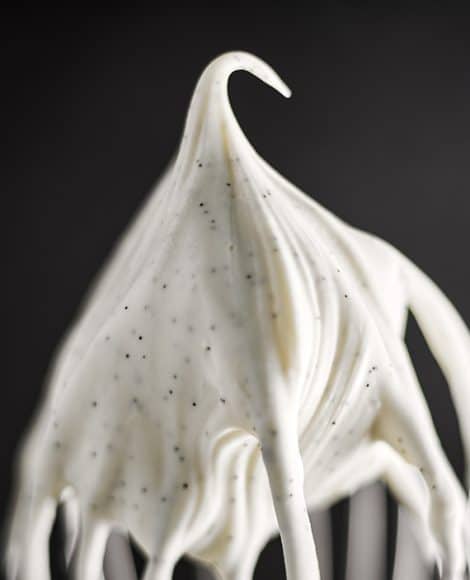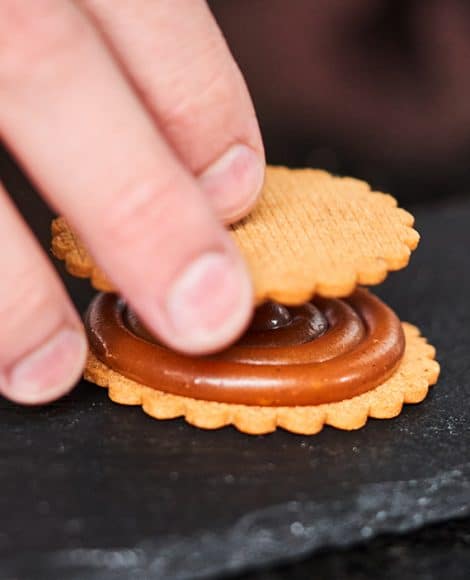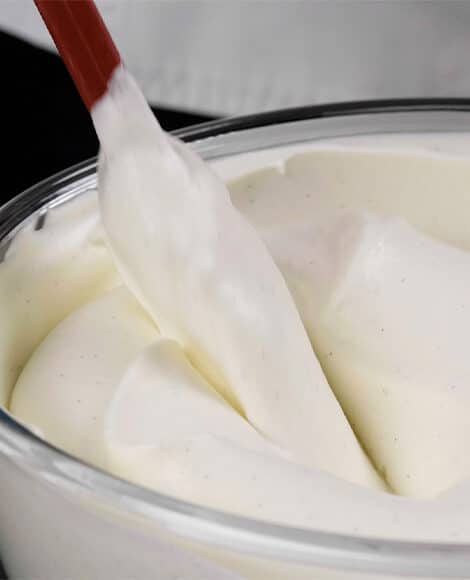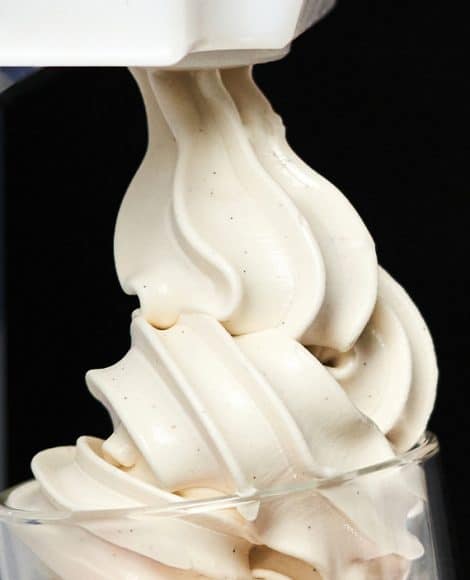Vanilla essentials
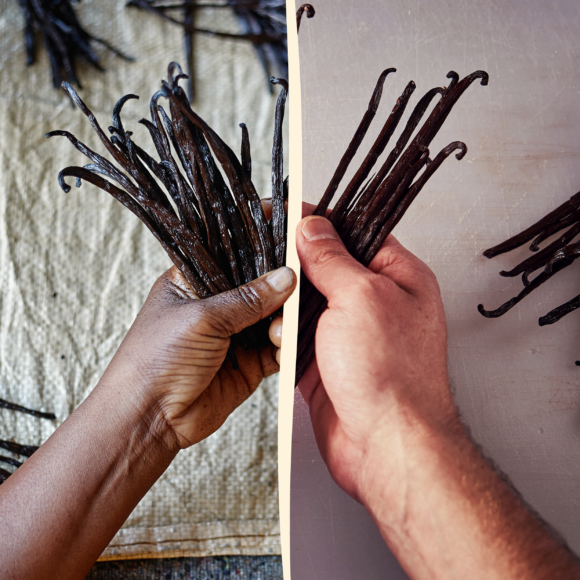
We wanted to go further in the use of vanilla in your lab, by sharing with you our findings and tips for a precise, fair and enlightened approach to the use of vanilla in pastry.
Produced in collaboration with the pastry chefs of l’école Valrhona and nourished by many shares from partner clients, we hope that these tips will accompany you on a daily basis and inspire you to new uses of vanilla in your recipes!
- DIFFERENT WAYS OF COOKING WITH VANILLA
- INFUSIONS
- HOW TO MAKE YOUR OWN VANILLA PASTE
- ESSENTIAL VANILLA RECIPES
- Download the booklet
DIFFERENT WAYS OF COOKING WITH VANILLA
"We have decided to start listing vanilla in grams in our recipes, rather than number of beans. This allows us to make sure our recipes are consistent and their aromatics reliable." MARTIN BOUTRY – Pastry chef instructor at l'Ecole Valrhona
VANILLA BEANS’ DIFFERENT PARTS:
-
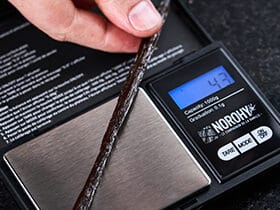
Vanilla from Madagascar
The vanilla pulp (i.e.: the seeds and oil) makes up an average of 25% of a Madagascan vanilla bean’s weight (if it is black and non-split), with the remaining weight made up by the casing. -

Tahitian Vanilla
The pulp makes up an average of 30% of a Tahitian vanilla bean’s weight.
INFUSIONS
WHY DO WE INFUSE VANILLA?
Technically speaking, infusions are a way of extracting key active ingredients or plant flavors by dissolving them in a liquid.
We usually infuse vanilla beans in milk or cream, because fat particles hold onto flavors. For instance, cream is better at taking on a vanilla flavor than milk when we use the same weight of bean and infuse it for the same length of time. However, sugar is also capable of taking on aromatic notes.
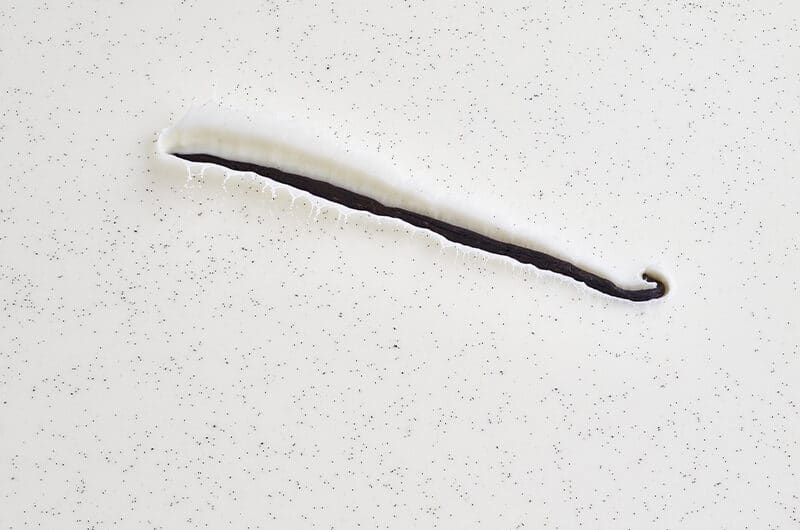
You can infuse vanilla hot or cold. The vanilla aromas will come out in different ways, depending on the kind of infusion you choose:
COLD INFUSIONS (OR MACERATION)
Temperature: 40°F (4°C)
Time: 24 hrs
The vanilla flavors won’t be hampered by the hot milk’s as they develop, while the milk won’t start to steam and release flavors.
The tasting experience (with a milk base): woody, more intense notes.
→ Sweet and complex aromatic notes
HOT INFUSIONS
Temperature: 175°F (80°C)
Time: 20 mins (lidded and off the heat)
Our trials have shown that heating the milk or cream doesn’t extract any more flavor from the bean.
The tasting experience (with a milk base): woody, rounded notes, with a note of warm milk for an extra touch of indulgence.
→ Woody, indulgent aromatic notes.
RECOMMENDATION
8g beans for 1l preparation *
The beans are split then scraped to extract the seeds.
The harder you scrape, the more pulp you will get in the preparation. Its tangy flavor can very interesting, but do pay attention to how it changes the look of your product. Overly large lumps of brown pulp can be unattractive.
* We have recommended the quantities and infusion times listed above based on the results of our trials and research, but you are very welcome to choose how much you use !
“CLASSIC” INFUSIONS

A WORD ABOUT INFUSIONS
Only the woody part of a vanilla bean infuses in liquid. This casing is highly aromatic, offering a panoply of complex woody notes. As a result, infusing the bean’s casing remains the most widely used way of extracting flavor, because it brings a certain fullness and complexity.
WHAT TO DO WITH YOUR BEANS AFTER INFUSING THEM
You can add your beans to syrup or rum as a flavoring.
You can dry them and turn them into a powder (put them in a hot cupboard or leave them in the oven at 195°F or 90°C).
You can also add your used beans to a praliné or sugar, or simply put them in a blender with the latter to flavor it.
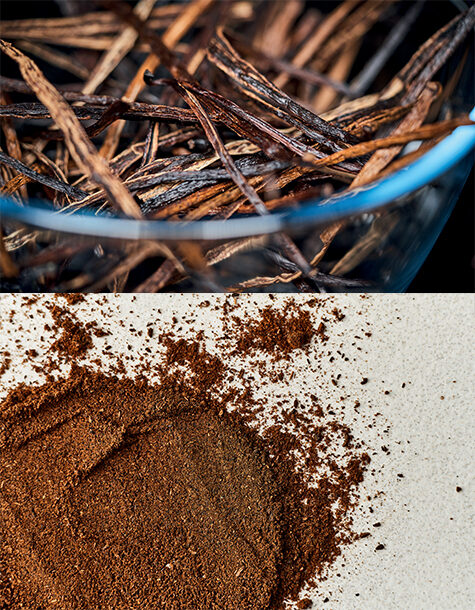
AN ALTERNATIVE TO CLASSIC INFUSIONS
Cut the beans into pieces, then blend them with milk or cream for stronger aromatic quality.
Strain this (usually milk-based) preparation to get rid of any lumps.
The results have a very high seed content, as well as very intense woody aromas.
Aromatically, it is a complex blend of vanilla seed and woody casing.
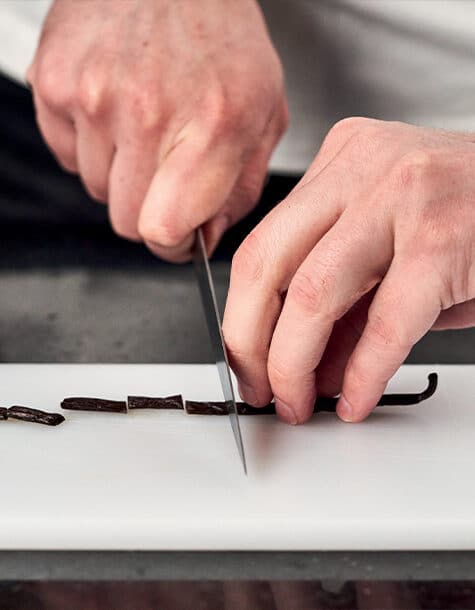
HOW TO MAKE YOUR OWN VANILLA PASTE
If you like using vanilla beans but you make a lot of products and you don’t have the time to scrape and infuse them, here are some hints and tips for making your own vanilla paste. Vanilla paste has several advantages:
• It saves you time compared to other ways of processing beans
• It avoids waste
• It provides intense woody flavor
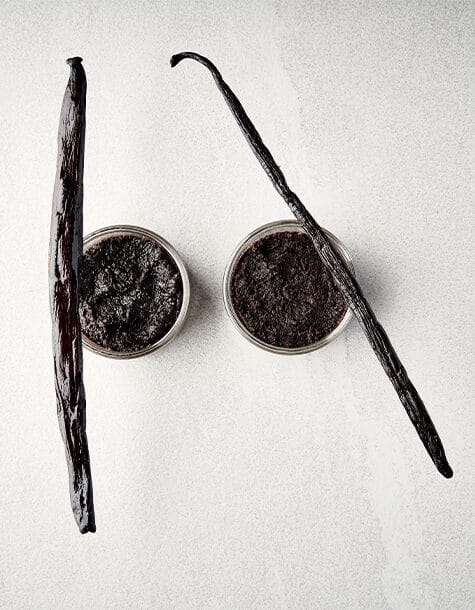
“HOMEMADE” VANILLA PASTE RECIPE
NOROHY Madagascan or Tahitian vanilla bean ………………250 g
Invert sugar ……………………………………………………………….250 g
We add 50% invert sugar to make it easier to use, weigh and store. Remember to factor in the amount of sugar you use when you are quantifying your recipes, especially when you are making ice cream or chocolates. We recommend storing it at 40°F (4°C) or -1°F (-18°C), depending on how often you use it.
Freeze the whole vanilla beans.
Combine the frozen vanilla beans and invert sugar in a blender.
Mix them together as thoroughly as possible.
If you need to, put the results back in the freezer, then repeat.
Use your paste as it is.
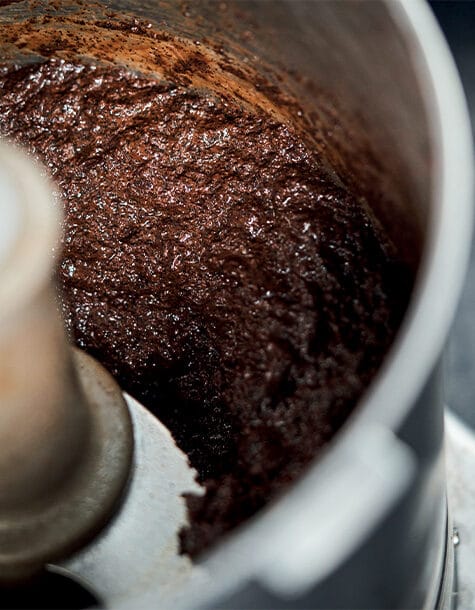
.



